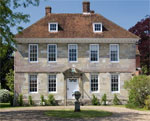Edward Heath's Salisbury house
The home of former prime minister Sir Edward Heath is to close to the public and be sold


Arundells, the Salisbury house owned by the former prime minister Sir Edward Heath, will close to the public at the end of the month, despite efforts to keep it open.
When he died five years ago, Sir Edward Heath left the house which is the catheral close to the nation. However, the Trustees of the Sir Edward Heath Charitable Foundation have blamed high operational costs for the forced closure of the house which is estimated to be worth £5 million.
A group of friends sent a detailed plan to the Charity Commission and the trustees suggestion measures to introduce savings and increase income.
But a statement from the trustees says: 'The trustees greatly appreciate the interest in and enthusiasm for Arundells which has been evinced, and have given careful and serious consideration to these representations and proposals.
'They have been obliged to conclude that the proposals could never suffice to enable the Foundation to operate on a viable basis.'
The trustees have now confirmed the application to the Charity Commission to close the house.
It is expected that the property will be sold for residential use either this autumn or next spring with the proceeds to go to other charitable purposes provided for in Sir Edward's will.
Exquisite houses, the beauty of Nature, and how to get the most from your life, straight to your inbox.

